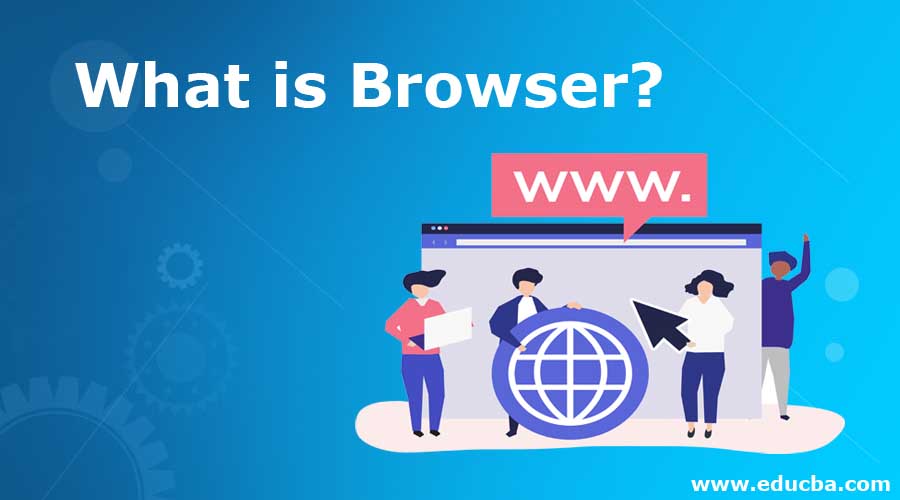Introduction to Browser
A browser is an application program that provides a way to view and interact with all of the World Wide Web information. This includes Web pages, photos, and videos. Before the Web, the word “browser” originated as a generic term for user interfaces that enable you to access text files online. Today, many people can use web browsers to access the internet, and it is perceived almost as a necessity of how many people manage their everyday lives.
From where we can download different browsers
In a new window, open the below links. When downloaded, you’ll need to open your download folder and start the installation on your machine for the application to update.
- https://www.google.com/chrome/
- https://www.apple.com/safari
- https://www.opera.com/
As long as your computer meets the browser specifications, more than one (or all) of the browsers above might have been installed on your computer.
How Does Browser Work?
Web browsers act as part of a hybrid client/server. The client is the application running on the computer of the user and makes requests to the web server, while the server-side is the webserver that sends back details to the application. The browser then interprets the user’s device and displays the information. Web browsers are usually composed of many interworking pieces. This includes the UI, which is the point at which the user communicates with the browser. The browser’s engine queries the renders, and the rendering engine gives an interpretation of the XML or HTML documents to the requested Web page. Networking is what manages security and connectivity within the Internet. An interpreter for Javascript interpretation is used for Javascript application interpretation and execution on a website. The Backend of the UI is used for widgets and windows. In order to preserve data, including bookmarks, caches, and cookies, a storage layer called data storage/specification manages data.
Components of a Web Browser are given as follows:
- User Interface: The user interface is an environment in which the user can use different choices such as the window address bar, back and forth button, menu and bookmarking.
- Browser Engine: The UI and the rendering motor are linked as a bridge. It queries the rendition engine and manipulates it based on inputs from multiple user interfaces.
- Networking: URLs are obtained via internet protocols such as HTTP and FTP. It manages all forms of communication and security on the Internet. In addition, a retrieved document can be used to store network traffic.
- Data Storage: To order to store some kind of information locally as cookies, the data store is a persistence layer that a browser uses. A browser supports many storage processes, including IndexedDB, WebSQL, localStorage, and FileSystem.
- JavaScript Interpreter: JavaScript Interpreter converts the JavaScript code used in a document and executes it as the name suggests. The returning engine will show the translated findings on the system display screen.
Features of Browser
Below are the Common features of Browser:
- Bookmarks: This allows a user to select other, pre-defined websites by users.
- Tabs: This allows users in a single window to open a variety of websites.
- Back and Forward Buttons: This takes the user to the previous or next tab.
- Stop A button that prevents a Web loading page from interrupting contact with a Web server.
- Refresh: This feature will reload the page.
- Home Button: Which takes a user to a preselected homepage when selected.
- URL: URLs Are Keys. The web address or URL that you enter in the address bar informs the browser where a page or pages can be accessed. For instance, you are taken to the educba.com homepage when entering the https://www.educba.com/ URL in the address bar. In two key parts, the user sees this particular URL. The first is the http:/ element protocol. HTTP is a standard protocol for requesting and distributing Internet files, the bulk of web pages and items. Since the browser is aware that the protocol is HTTP, it understands how to view anything to the front slashes’ right.
How Web Browsers Help your Business?
All effective businesses take some form or form of digital marketing. You must ensure its accessibility on all major platforms while designing your company website. If not, you can lose traffic and company and unintentionally transfer clients to your competitors’ websites. Food producers rely heavily on appealing photos and videos to make their products and their materials (and prestigious) glamorous. The clothing they sell will look as stylishly by the beauty and design firms. You may lose potential clients if a web browser can’t load images properly. Sites that load quickly in one browser type but slowly in another can lose customers. If people are upset, people want fast answers, close your web site quickly, and look to your competitors. That click counts, so cross-browser enforcement is more useful than you can imagine for your company.
Recommended Articles
This is a guide to What is Browser?. Here we discuss a browser’s definition, the different components of a browser, and its features and applications. You can also go through our other suggested articles to learn more –



